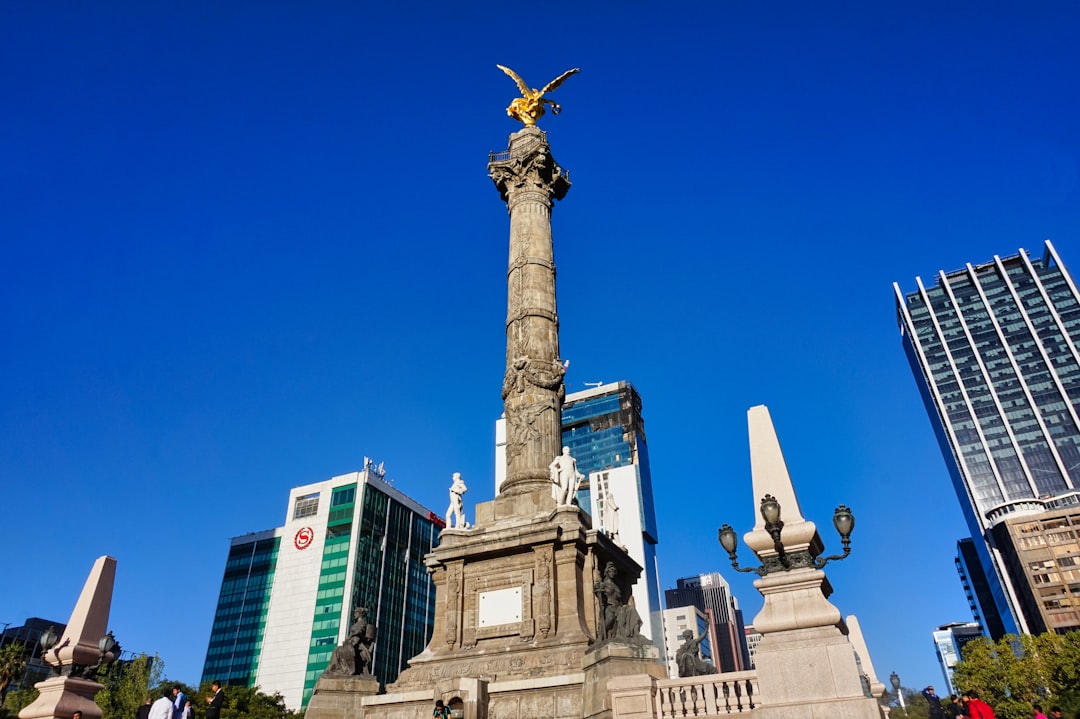Hidden Gems for Digital Nomads Airfare Deals and Public Transport Guides

Introduction
Digital nomads thrive on flexibility, adventure and the ability to work from anywhere with a reliable internet connection. While the allure of exotic cafés, coworking spaces and sunrise beach walks fuels the nomadic spirit, the practical side of travel—getting there for the right price and moving around once you arrive—often decides whether a destination feels like a true hidden gem or just another costly stopover.
In this guide we dive deep into two essential pillars of the nomadic lifestyle: uncovering airfare deals that keep your budget lean, and mastering public‑transport systems that let you explore cities like a local. The focus is on the lesser‑known tricks, tools and routes that most travel blogs overlook, giving you the confidence to book cheap flights and navigate unfamiliar metros, trams and buses without missing a beat.
Why Airfare Deals Matter for Nomads
- Budget Stretching – A single round‑trip ticket can consume a large portion of a nomad’s monthly budget. Securing a deal means more money for accommodation, coworking passes and leisure.
- Location Flexibility – Cheap flights open up destinations that would otherwise be out of reach, allowing you to experiment with new bases and avoid “destination fatigue.”
- Seasonal Freedom – When you can travel affordably at any time of year, you are not forced to conform to peak‑season price spikes or weather constraints.
The key is not just finding a cheap ticket, but learning a systematic approach that turns airfare hunting into a repeatable habit.
The Foundations of a Successful Airfare Hunt
Set Up Price Alerts Early
Create alerts on at least three flight‑search platforms. Most services let you name a route and receive daily or weekly emails when prices dip. This passive monitoring frees up mental space for work while the tools do the heavy lifting.
Use Incognito or Private Browsing
Airlines track search history and can raise prices when they detect repeated interest. Opening a private window each time you search prevents this “dynamic pricing” effect.
Embrace Flexible Dates and Airports
Most flight engines have a “flexible dates” option that shows a calendar of cheapest departures within a month. Similarly, checking nearby airports—both for departure and arrival—can uncover savings of 20‑30 percent. For example, flying out of Brussels instead of Amsterdam, or landing in Medellín rather than Bogotá, often yields lower fares.
Leverage the “Hidden City” Technique (With Caution)
Some airlines price a multi‑leg itinerary cheaper than a direct flight to the same destination. Tools like Skiplagged expose these hidden‑city fares. Use them only for one‑way trips, never for checked luggage, and be aware that airlines may penalise frequent offenders.
Combine Airlines and Booking Sites
Mixing carriers on a single itinerary—known as “mix‑and‑match”—can produce savings unavailable on a single‑airline round‑trip. For instance, book the outbound leg with a low‑cost carrier and the return with a legacy airline that offers a discount on a specific route.
The Best Tools for Finding Low‑Cost Flights
| Tool | Core Strength | Ideal Use |
|---|---|---|
| Google Flights | Visual calendar, price‑trend graphs | Quick overview of price movement |
| Skyscanner | Wide carrier coverage, “Everywhere” search | Discover new destinations |
| Momondo | Detailed price breakdown, airline‑specific filters | Compare low‑cost vs full‑service |
| Airfarewatchdog | Human‑curated deal alerts, regional newsletters | Niche market routes |
| Kiwi.com | “Nomad” search for multi‑city itineraries | Complex travel plans |
| Hopper | Predictive price forecasting, mobile‑first | When to buy or wait |
Combine at least two of these platforms for cross‑verification. If a fare appears low on one but not the other, dig deeper—sometimes a promotional code or a different currency conversion makes the difference.
Timing Your Purchase
- The 6‑Week Sweet Spot – Historically, many routes see their lowest fares about 45‑55 days before departure. This is not a rule, but a useful benchmark when scanning for deals.
- Mid‑Week Bookings – Tuesdays and Wednesdays often have lower average prices because airlines release mid‑week fare updates.
- Late‑Night Searches – Some airlines roll out “flash sales” after business hours. Setting an alert for midnight (your local time) can capture these brief windows.
- Seasonal Sales – Keep an eye on airline anniversary dates, Black Friday, Cyber Monday and “Travel Tuesday.” Even niche carriers run promotions during these periods.
Loyalty Programs That Actually Pay Off
Digital nomads often fly with a variety of airlines, making a single loyalty program less useful. However, a few flexible, alliance‑wide programs stand out:
- Airline Alliances (Star Alliance, Oneworld, SkyTeam) – Accumulate miles across dozens of carriers and redeem for free legs, upgrades or lounge access.
- Credit‑Card Travel Points – Cards that convert points to airline miles (e.g., Chase Sapphire Preferred, American Express Membership Rewards) provide flexibility when you don’t have a single carrier preference.
- Low‑Cost Carrier Memberships – Programs like Ryanair’s “Ryanair Rooms” or EasyJet’s “Flight Club” offer discounted fares and priority boarding for a modest annual fee.
Use a spreadsheet or a dedicated app (e.g., AwardWallet) to track mileage balances, expiration dates and redemption options. The small time investment can lead to free or heavily discounted flights over a year.
Budget Hubs and Hidden Low‑Cost Carriers
Certain airports serve as gateways for ultra‑cheap routes that are often overlooked by mainstream travel guides. Below are some hidden gems worth adding to your radar:
Europe
- Sofia Airport (SOF), Bulgaria – Home to Wizz Air’s extensive network across Europe and the Middle East. Low‑cost connections to Prague, Istanbul and even Dubai.
- Riga International (RIX), Latvia – AirBaltic offers cheap flights to Scandinavia, the Baltics and the UK, with a reputation for on‑time performance.
- Paphos (PFO), Cyprus – Small airport with seasonal low‑cost flights to the UK, Germany and Russia, ideal for winter sun seekers.
Asia
- Da Nang (DAD), Vietnam – VietJet and Bamboo Airways run ultra‑low‑cost flights to Bangkok, Kuala Lumpur and Manila.
- Chiang Mai (CNX), Thailand – Low‑cost carriers like Nok Air and Thai AirAsia connect to domestic hubs and regional cities at a fraction of the price of Bangkok.
- Kuala Lumpur (KUL), Malaysia – AirAsia’s home base; frequent flash sales to Indonesia, the Philippines and even Japan.
Latin America
- Cali (CLO), Colombia – Avianca’s regional hub, offering cheap connections to Medellín, Quito and even Caribbean islands.
- Asunción (ASU), Paraguay – Emerging low‑cost market with LATAM and local carriers offering budget routes to Buenos Aires and São Paulo.
When you base yourself near one of these hubs, you can treat the city as a “flight‑shopping base,” flying out for cheap weekend getaways and returning to a familiar coworking environment.
Building a Personal Airfare Playbook
- Define Your Core Routes – List the top five city pairs you travel most often.
- Set Alerts – Use Google Flights and Skyscanner for each pair, choosing “price drop” notifications.
- Create a Calendar – Mark the 6‑week window before each planned trip; schedule a price‑check day within that window.
- Identify Backup Airports – Note the nearest alternatives for both departure and arrival.
- Reserve a “Deal Day” – Choose a day of the week (often Tuesday) when you will commit to purchase if the price meets your target.
- Track Loyalty Points – Update your mileage spreadsheet after each flight, noting any promotions you can combine.
Treat the playbook as a living document—adjust targets, add new routes and refine alert settings as you gather data on what works best for your travel style.
Public Transport Guides: Moving Like a Local
Cheap, reliable public transport is the lifeblood of a nomadic lifestyle. It not only saves money but also opens doors to neighborhoods off the typical tourist radar. Below we break down the essential steps to master any city’s transit system, from the moment you land to your daily commute.
Step 1 – Download the Right Apps
| Region | Recommended Apps | Key Features |
|---|---|---|
| Europe | Citymapper, Google Maps, local transit apps (e.g., BVG for Berlin) | Real‑time updates, multi‑modal routing |
| Asia | Moovit, local metro apps (e.g., Taipei MRT) | Fare calculators, language support |
| Latin America | Transit, local bus apps (e.g., Vem São Paulo) | Cash‑free ticketing, route maps |
| Africa | Maps.me (offline), local Uber alternatives | Offline navigation, fare estimates |
Install at least two apps per city—one global (Google Maps or Citymapper) and one official local app. This redundancy ensures you have up‑to‑date information even when one service experiences outages.
Step 2 – Understand the Ticketing System
- Contactless Smartcards – Many cities issue reusable cards (e.g., Oyster in London, Navigo in Paris, Octopus in Hong Kong). Purchase one at the airport or a major station, load credit, and tap for each journey.
- Mobile QR Codes – In places like Singapore and Seoul, you can buy tickets directly within the transit app and scan a QR code at entry gates.
- Cash‑Only Buses – Some Latin American and African cities still require exact change. Keep small bills or coins handy; buying a ticket on board often costs a few cents more than a pre‑purchased pass.
- Day/Week Passes – For longer stays, day passes (e.g., 24‑hour ticket in Madrid) or weekly unlimited passes provide huge savings compared to single rides.
Check the city’s official transport website for the most current pricing and any tourist discounts.
Step 3 – Map Out Core Commutes
Identify the following three routes before you start working:
- Home to Coworking Space – Use the fastest, most reliable line, even if it costs slightly more.
- Coworking to Grocery/Market – Look for routes that run frequently during early mornings or late evenings.
- Home to Nightlife or Exercise Spot – Ensure there is service after typical work hours, or plan a backup (bike‑share, ride‑hailing).
Write these routes down in a simple table or note‑taking app, including line numbers, transfer stations and approximate travel time. Having this cheat sheet reduces daily decision fatigue.
Step 4 – Learn the Etiquette
- Stand on the Right – In many subway systems, standing on the right side of escalators keeps traffic flowing.
- Offer Seats – In Asian metros, giving up your seat to seniors, pregnant women or people with disabilities is customary.
- Keep Noise Low – Use headphones at a moderate volume; loud conversations can draw unwanted attention.
- Validate Before Boarding – In some European cities you must tap your card before entering the platform, not just at the gate.
Observing local norms helps you blend in and often results in a smoother travel experience.
Step 5 – Keep an Eye on Safety
- Peak vs Off‑Peak – Early mornings and late evenings can be less crowded; stay aware of your surroundings.
- Avoid Empty Carriages – In some regions, isolated cars are targeted by pickpockets. Ride in the middle of the train where there are other passengers.
- Secure Your Belongings – Use a money belt or anti‑theft backpack. Keep wallets in front pockets and laptops in a zippered compartment.
Most public transport systems are safe, but a few precautionary habits go a long way.
Hidden Public‑Transport Gems by Region
Lisbon, Portugal
- Tram 28 – While it’s a popular tourist route, buying a 24‑hour public‑transport ticket gives you unlimited rides on this historic tram, the metro and buses. The ticket costs less than a single taxi ride to the city centre.
- Viva Viagem Card – Load it with a “Zapping” balance and enjoy discounted fares on the Aerobus to the airport.
Chiang Mai, Thailand
- Songthaew Network – Red pick‑up trucks operate like shared minibusses, covering routes that the city’s limited bus system does not. A single ride costs around 20 baht, and you can flag them down anywhere along the route.
- Bike‑Share – The city’s public bike‑share program, “Bike2Go,” offers free rides for the first 30 minutes and cheap extensions, perfect for short trips between coworking spaces and cafés.
Medellín, Colombia
- MetroCable – An aerial cable car that connects low‑lying neighbourhoods to the central metro line. The ticket is the same as a regular metro ride, giving you affordable access to scenic hilltop cafés with panoramic city views.
- Integrated Ticket – Purchase a single “Civica” card and you can travel on the metro, buses, and tram without needing separate tickets.
Tallinn, Estonia
- Free Public Transport for Residents – If you register as a resident (possible with a digital nomad visa), you get free rides on buses, trams and trolleybuses. Even non‑residents can obtain a 72‑hour tourist pass for a modest fee.
- Smart‑Ticket “Ühiskaart” – Load it via a mobile app and enjoy contactless travel, plus discounts at participating cafés.
Kuala Lumpur, Malaysia
- KTM Komuter – A commuter rail that reaches suburbs and nearby towns like Batu Caves. It’s cheaper and faster than the LRT for long‑distance trips across the Klang Valley.
- Touch‑N‑Go Card – The city’s universal contactless payment card works on all buses, trains, the airport rail link, and even toll roads.
Exploring these lesser‑known options often reveals cheaper, faster and more authentic ways to move around, letting you allocate more budget toward experiences rather than transport.
Multi‑City Transit Strategies for Nomads
When you spend weeks or months in a region, you can treat the transport network as a long‑term investment. Here are three strategies that turn public transport into a cost‑saving powerhouse.
1. Regional Passes
Many countries sell passes that cover an entire region. For example:
- Eurail Global Pass – Allows unlimited train travel across 33 European countries for a set number of travel days.
- Japan Rail Pass – Unlimited Shinkansen and local train rides for 7, 14 or 21 days.
- Interrail Youth Pass – Similar to Eurail but for residents of European countries under 28.
If you plan to hop between cities frequently, calculate the cost of individual tickets versus a pass. Often, a pass pays for itself after just a few long‑distance trips.
2. “Hub‑and‑Spoke” Living
Choose a central city with a robust transport hub and use it as a base. From there, make day trips to surrounding towns using cheap commuter trains or buses. Example:
- Base in Budapest – Use the Hungarian State Railways (MÁV) to reach Vienna, Bratislava and even Prague within a day, all for under €30 each way.
This approach reduces accommodation costs while still giving you access to multiple cultures.
3. Night Trains and Buses
Night services let you combine travel and sleep, saving on both transport and a night’s accommodation. Europe’s night train network (e.g., Nightjet, Intercité) and South America’s “cama” buses are reliable options. Book a couchette, wake up in a new city and start working immediately—no need for a hotel check‑in.
Money‑Saving Hacks for Public Transport
- Off‑Peak Discounts – Some metros (e.g., Tokyo) charge half‑price during non‑rush hours. Schedule meetings or work sessions accordingly.
- Student or Youth Rates – Even if you are not a student, many cities offer “youth” passes for anyone under 30. Carry a passport as proof.
- Group Tickets – If you work from a coworking space with other nomads, buy a family or group ticket; many systems allow 2‑4 people to travel together at a reduced rate.
- Mobile‑Only Subscriptions – In cities like Seoul, subscribing to a mobile data plan that includes transport credits can be cheaper than buying a physical card.
Combine these tactics with your travel calendar to shave off additional euros or dollars from daily commuting costs.
The Role of Ride‑Sharing and Micro‑Mobility
While public transport is the backbone of affordable travel, ride‑sharing and micro‑mobility services fill the gaps when you need a quick, door‑to‑door solution.
- Scooter Rentals – Companies such as Lime, Bird and local equivalents let you rent electric scooters for short hops between metro stations and coworking spaces. Rates are usually per minute, making it cheap for distances under 2 km.
- Bike‑Share – Many cities have dockless bikes that can be unlocked via an app. Some offer daily or weekly subscription plans that reduce per‑minute costs.
- Car‑Sharing – Services like Zipcar, Getaround or local car‑share fleets provide hourly rentals. They are useful for occasional trips that public transport cannot reach, such as remote hiking trails.
Use these services sparingly and only when they truly save time or effort; otherwise, stick to the public system for maximum savings.
Putting It All Together: A Sample Week in a Hidden Gem
Destination: Medellín, Colombia
Base: El Poblado neighbourhood, coworking space “Selina Co‑Working”
| Day | Morning Commute | Mid‑Day Move | Evening Activity | Transport Used |
|---|---|---|---|---|
| Monday | Selina → Metro Line A (San Antonio) → Universidad (30 min) | Walk to nearby café for lunch | Return to El Poblado for yoga class | Metro, walking |
| Tuesday | Bike‑share to San Javier station, then Metro Cable to Santo Domingo (15 min) | Metro to Laureles for client meeting | Night market in Laureles, then Metro back | Bike, MetroCable, Metro |
| Wednesday | Remote work from Selina (no commute) | Take the Metro to Parque Berrío for a city tour | Dinner at a rooftop bar, walk back | Metro |
| Thursday | Early bus (SITP) to La 70 for a networking event (45 min) | Return via Metro to El Poblado | Evening ride‑share to a nearby vineyard for a tasting | Bus, Metro, ride‑share |
| Friday | Walk to coworking (no transport) | Use the free “Civica” card for a 2‑hour Metro pass to explore the historic centre | Sunset at Metrocable station, then walk home | Walking, Metro |
| Saturday | Day trip: take the Metro to the airport, then a cheap flight to Cartagena (budget airline) | Explore Cartagena’s old town | Fly back to Medellín late night | Metro, low‑cost flight |
| Sunday | Rest day – use the city bike‑share to cycle along the river | Picnic in Parque Arví (MetroCable) | Early night, prepare for next week | MetroCable, bike‑share |
Key Takeaways
- The Civica card eliminates the need for paper tickets and offers free transfers between buses and metro.
- Bike‑share fills the “first‑mile” gap, especially when stations are a block away from workspaces.
- MetroCable provides both scenic views and rapid access to hilltop cafés that would otherwise require a taxi.
By layering these transport options, the weekly commuting cost stays under $10 USD, while the overall experience feels authentic and deeply integrated with local life.
Tips for Maintaining a Low‑Cost Travel Lifestyle
- Track Every Expense – Use a budgeting app (e.g., YNAB, Mint) to log flight purchases and daily transport fares. Seeing the numbers helps you identify where you can cut further.
- Stay Informed About Policy Changes – Transport authorities frequently adjust fare structures. Subscribe to official newsletters or follow their social media for alerts on price hikes or new discounts.
- Leverage Community Knowledge – Join nomad‑focused groups on Facebook, Reddit or Discord. Members often share flash‑sale links, promo codes for airline tickets, and insider tips on hidden bus routes.
- Negotiate Long‑Term Passes – If you plan to stay in a city for a month or more, ask the transit authority for a bulk‑purchase discount. Some systems offer “monthly passes” at a reduced rate when bought via a corporate or educational partnership.
- Stay Flexible – The willingness to change your departure airport, travel date, or even destination at the last minute is often rewarded with unexpected savings.
Consistency in these habits turns occasional bargain hunting into a sustainable, low‑stress travel routine.
Conclusion
Finding hidden airfare deals and mastering public‑transport networks are not separate tasks; they are intertwined components of a thriving digital‑nomad lifestyle. By setting up systematic alerts, exploiting flexible dates, and tapping into regional low‑cost carriers, you can keep flight expenses to a fraction of what most travelers spend. Once you land, a deep understanding of ticketing options, smart‑card systems, and local etiquette lets you move through cities quickly, safely and affordably.
The real power comes from combining these strategies: use cheap flights to base yourself near a transport hub, leverage regional passes for multi‑city exploration, and fill the gaps with bikes, scooters and occasional ride‑shares. With the playbooks, tools and regional insights provided here, you are equipped to turn every journey into a cost‑effective adventure, freeing up more of your budget for the experiences that truly define the nomadic way of life.
Random Posts

Mastering Remote Work with Essential Productivity and Communication Tools
Learn how the right mix of productivity and communication tools can turn remote work challenges into seamless collaboration, boosting focus, teamwork, and results for freelancers, startups, and enterprises.
3 weeks ago

Beach and Mountain Nomad Gems Across Latin America
Discover Latin America’s top beach and mountain spots for digital nomads, from Rio’s vibrant coworking hubs and affordable seaside living to hidden mountain retreats that blend fast WiFi, community, and adventure
3 weeks ago

Digital Nomad Mexico Safety and Travel Tips
Discover essential safety advice and travel hacks for digital nomads in Mexico, from choosing secure neighborhoods and navigating transport to health care tips and cultural etiquette for a smooth remote work adventure
2 months ago

The Future of Workspaces From Home Offices to International Coworking
Discover how workspaces are evolving from home desks to global coworking hubs, the design and tech that boost productivity, and practical steps for individuals and companies to thrive in the new flexible work era
2 months ago

Optimizing Income Streams as a World Traveling Worker
Learn how to build a diversified income portfolio - active gigs, passive royalties, and crypto - while mastering tax, exchange rate, and banking hurdles, so your nomadic lifestyle stays profitable and stress free
2 months ago
Latest Posts

Essential Software Every Remote Professional Should Use
Master remote work with essential tools: instant messaging like Slack, high definition video calls such as Zoom, and asynchronous voice apps. Streamline communication, stay connected and boost productivity.
1 day ago

Mastering Remote Work Productivity for Digital Nomads and Freelancers
Learn proven habits, tools, and tactics that help digital nomads and freelancers stay focused, deliver quality work, and maintain a sustainable lifestyle while traveling the world.
1 day ago

Tech‑Friendly European Towns Perfect for Remote Living
Discover Europe’s best small towns where fast internet, affordable living and vibrant tech communities let you work remotely while soaking up historic charm, lakeside views or mountain air.
1 day ago